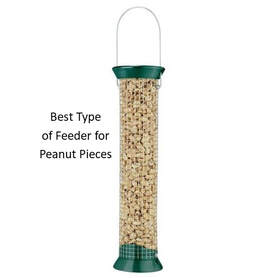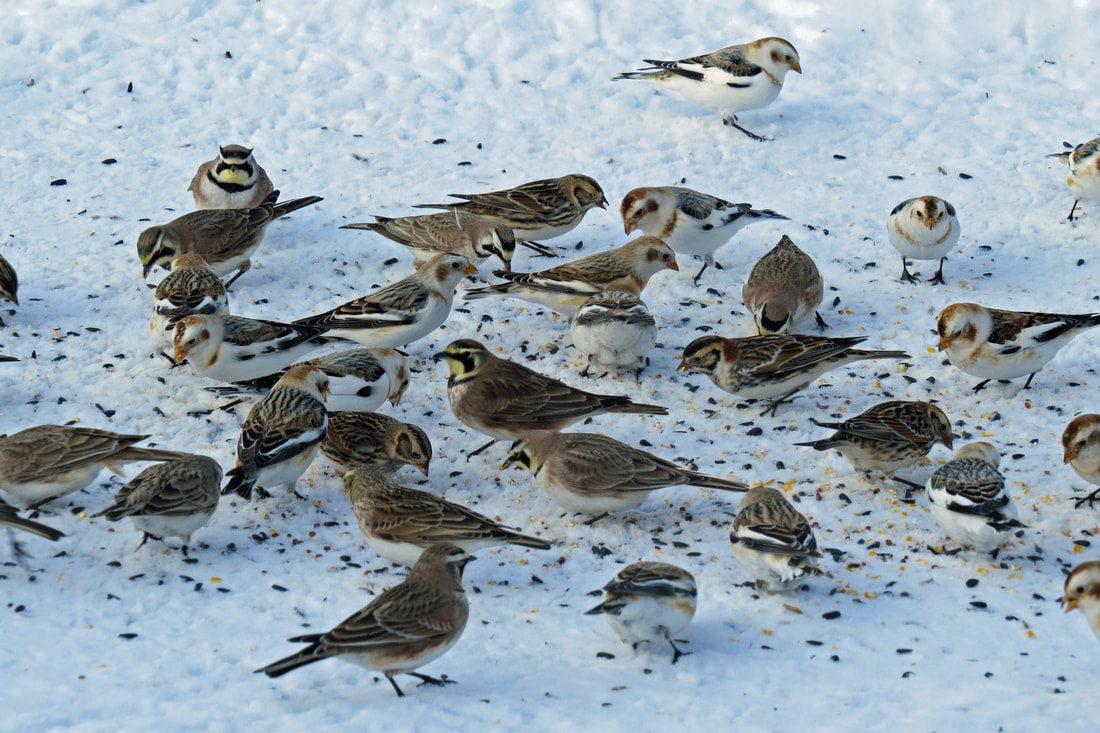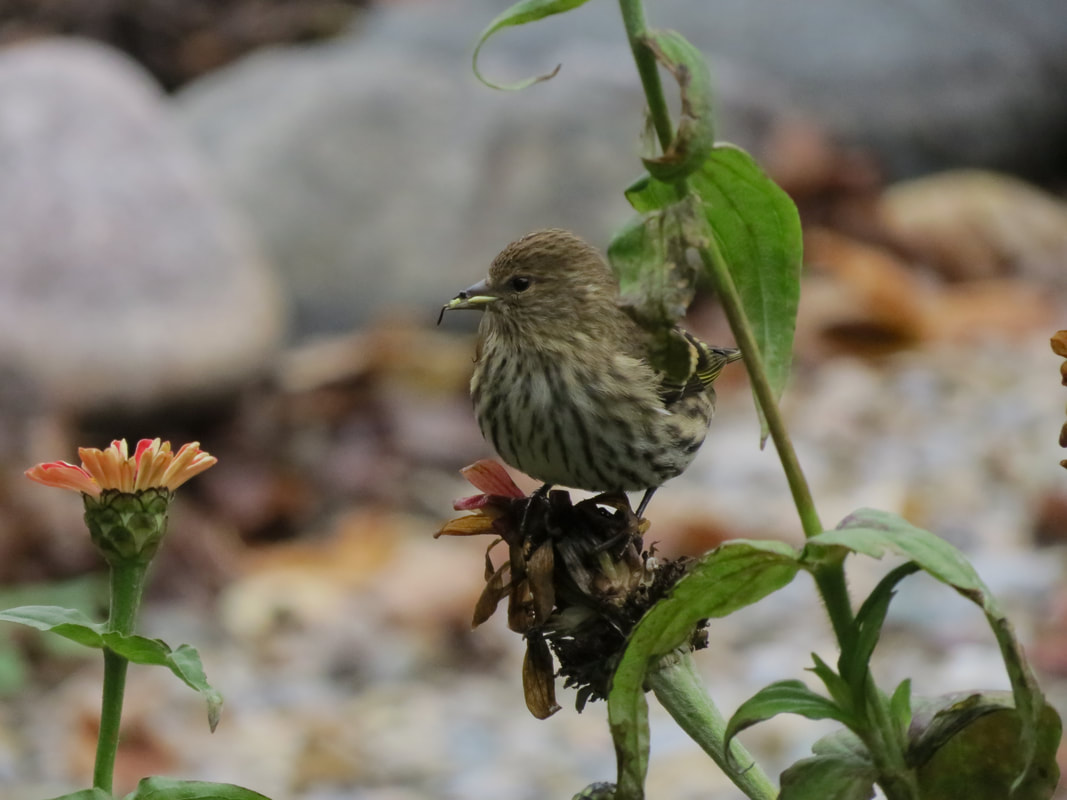Enjoying our Blogs?Your support helps BSBO continue to develop and deliver educational content throughout the year.
|
|
With winter nipping at our heels, it's time to think about what food is best for birds in the colder months. Most of the time our feeders are more for our enjoyment than they are for helping birds. But during extreme cold and persistent snow cover, bird feeders can make a big difference for small birds. Before we talk about store bought foods, here are a few general tips. 1) Remember that you don't have to fill the feeders to the top! In fact, in rainy or snowy periods, it's best to only fill them to provide enough food for a day or so to avoid wet, moldy food! (And if there's too much snow and ice to get to the your feeders, you can always scatter seed on the ground!) 2) Don't deadhead the flowers in your garden. Many birds will feast on the seeds! High energy foods are important in winter. The best options are highest in fat and require the least amount of energy to eat. They can be a bit more expensive than the bags of mixed seed and/or standard seeds we typically offer. So if you're on a budget, consider offering these only during the more extreme winter weather.  Peanuts Called peanut pieces, pickouts, and even "peanut rejects," out of the shell peanut pieces are an excellent winter food for birds. The birds don't have to work to crack the shell, and they're easy for even small birds to eat. Woodpeckers, chickadees, titmice, nuthatches, and blue jays LOVE peanuts! Offer in a mesh-style or tube feeder, or mix with black oil sunflower seeds in a tray feeder. (See image for my favorite type of peanut feeder.) Good Old Black Oil Sunflower Seeds (BOSS) If you can only offer one type of food, Black Oil Sunflower Seeds are best. They attract the greatest variety of birds, are fairly inexpensive, and have a longer shelf life than other seeds. In winter, consider offering sunflower chips. They're more expensive, but require less energy since the birds don't have to crack the shell. Offer in a tube feeder with the proper sized ports and/or in a tray feeder. Suet Whether you buy it or make it yourself, suet is a great food option for birds in winter. Mixed Seed *Providing mixed seed near the ground is important for sparrows, doves, and other birds that prefer to feed low and don't cling to tube style feeders Water Providing fresh, clean water is very important for birds in winter, not just to drink, but for bathing! Watching birds bathe in the winter, even in subzero temps, never ceases to astonish us. But keeping their feathers clean is crucial for maintaining their insulating properties, so bathing is very important. It can be labor intensive to keep a bird bath clean and prevent the water from freezing, but if you have the time and the space for a bird bath, the birds will definitely thank you! Bird bath heaters are available at box stores, on Amazon, and many other outlets that offer bird feeding supplies. But I'd encourage you to buy one from a Wild Birds Unlimited (or any bird feeding specialty store) or purchase one from one of these stores online. Two options for heating bird baths 1) Bird Bath Heater This is a heating element sold separately from the basin. They're positioned down in the water. If you use a bird bath heater, you'll need to monitor the water level very closely to avoid exposing the heating element. While not as convenient as a heated bird bath, over the years I've found this to be the best, most reliable option. 2) Heated Bird Bath With this style, the element is built into the bird bath design. These are wonderful, but keep in mind that during persistent extreme cold snaps the heating element in these might not keep up! * With either option you'll need electricity nearby. Winter is a wonderful time for birds in our yards. During times of persistent snow cover, you might even attract birds that don't typically visit feeders. If you live near open fields, birds like Horned Larks, Snow Buntings, and Lapland Longspurs will sometimes come to feed on seed scattered on top of the snow. (The picture I've included was taken in our driveway a few winters ago in Ottawa County!) And every winter a few Pine Warblers show up at feeders for a high energy meal of suet. Happy Winter Bird Feeding!
3 Comments
|
AuthorsBSBO Staff Archives
February 2024
Categories |


 RSS Feed
RSS Feed